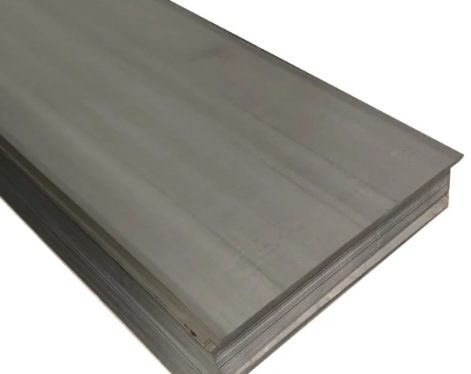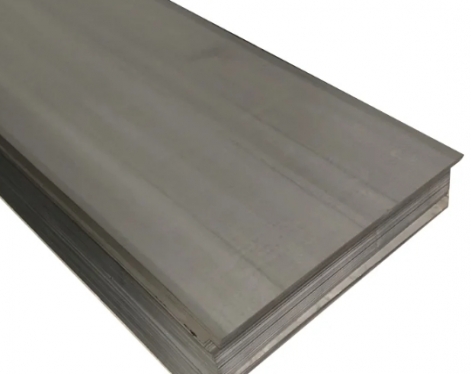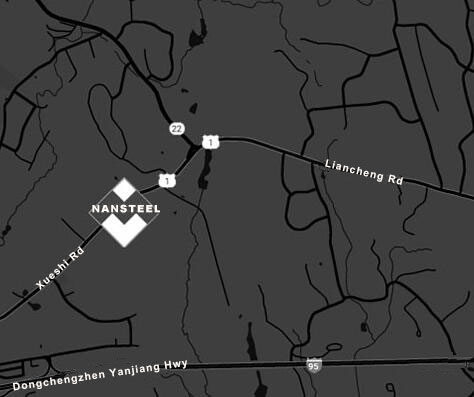Carbon steel plate is an iron-carbon alloy plate with a carbon content between 0.02% and 2.11%. Due to its high strength, easy processing and economy, it has become a core material in the fields of construction, manufacturing, energy, etc. According to the production process, it can be divided into hot-rolled carbon steel plate and cold-rolled carbon steel plate. The following are the key points of hot rolling process of carbon steel plates summarized by Nansteel Manufacturing Co., Ltd.
The core process of hot rolling
Hot rolling of carbon steel plates requires three key steps: heating, rolling and cooling:
Billet heating: The slab is placed in a walking beam heating furnace and heated to 1180 - 1210°C to form a uniform austenite structure inside the slab. At the same time, the oxide scale on the surface of the slab is removed through high-pressure water descaling technology to prepare for subsequent rolling.
Multi-pass rolling: First, rough rolling is performed to reduce the thickness of the heated slab to 30-60mm to initially shape the slab; then the slab enters the finishing mill to further accurately reduce the thickness to 1.2-25.4mm. During the entire rolling process, the computer system will dynamically adjust the rolling mill's reduction and bending force according to preset parameters to ensure the shape accuracy of the carbon steel plate.
Laminar cooling and coiling: After final rolling, the steel strip is rapidly cooled to 680-720℃ through a laminar cooling system, which promotes the formation of refined pearlite structure inside the steel strip and improves the performance of the steel plate. The cooled steel strip is coiled into a coil and then enters a slow cooling stage, which usually takes 48 hours to eliminate internal stress and stabilize the steel plate structure.

Significant advantages of hot rolling process
Carbon steel plate hot rolling process occupies an important position in the field of steel processing due to its unique advantages:
Performance optimization: Advanced controlled rolling and controlled cooling technology is the key to improving the performance of carbon steel plates. By precisely controlling the rolling and cooling processes, the pearlite lamellar spacing of carbon steel plates can be refined to ≤50μm, achieving a good balance between strength and toughness. Taking the common Q235B hot-rolled plate as an example, its yield strength is ≥235MPa and its elongation is ≥26%, which can fully meet the use requirements of various structural parts.
Cost and Efficiency: Hot rolling process performs well in terms of cost control and production efficiency. The energy consumption of hot rolling process is 30% lower than that of cold rolling, which greatly reduces energy costs; The yield rate is over 95%, reducing material waste. At the same time, the hot rolling process can produce thin plates with a width of 1000-1500mm, which can fully meet the diverse market needs.
Surface quality: The hot rolling process is equally good in terms of surface quality control. Using high-pressure water descaling technology, the descaling rate is as high as 99%, which can effectively remove the surface oxide skin; the surface roughness Ra≤6.3μm, the surface quality is good, and can be directly used for subsequent processing such as painting and welding.
Typical application scenarios of carbon steel plates
1. Construction Engineering: In the construction field, carbon steel plates are an indispensable basic material. For example, carbon steel plates made of Q345B are often used to build bridge trusses and high-rise building frames.
2. Q355NH weathering steel, due to the addition of corrosion-resistant elements such as copper and phosphorus, has a service life of more than 15 years in outdoor environments. It is particularly suitable for the construction of outdoor billboards, landscape sketches and other facilities.
3. Automobile Manufacturing: Hot rolled carbon steel plates play a key role in the automobile manufacturing process. Components such as frame longitudinal beams and wheel hub supports are mostly made of hot-rolled carbon steel plates with good stamping properties.
4. Energy equipment: Carbon steel plates are also widely used in the field of energy equipment. Equipment such as oil pipelines and pressure vessels are usually made of corrosion-resistant carbon steel plates with alloy elements such as Cr and Ni added.
Conclusion
Hot-rolled carbon steel plates have a perfect balance of strength and toughness through high-temperature rolling and organizational optimization, and are an indispensable basic material in the industrial field. In the future, with the continuous development of green manufacturing technology, hot-rolled carbon steel plates will continue to develop in the direction of high strength, corrosion resistance, and intelligence, providing strong support for infrastructure construction and high-end equipment manufacturing.
Read more: How to Store Carbon Steel Plates?
The core process of hot rolling
Hot rolling of carbon steel plates requires three key steps: heating, rolling and cooling:
Billet heating: The slab is placed in a walking beam heating furnace and heated to 1180 - 1210°C to form a uniform austenite structure inside the slab. At the same time, the oxide scale on the surface of the slab is removed through high-pressure water descaling technology to prepare for subsequent rolling.
Multi-pass rolling: First, rough rolling is performed to reduce the thickness of the heated slab to 30-60mm to initially shape the slab; then the slab enters the finishing mill to further accurately reduce the thickness to 1.2-25.4mm. During the entire rolling process, the computer system will dynamically adjust the rolling mill's reduction and bending force according to preset parameters to ensure the shape accuracy of the carbon steel plate.
Laminar cooling and coiling: After final rolling, the steel strip is rapidly cooled to 680-720℃ through a laminar cooling system, which promotes the formation of refined pearlite structure inside the steel strip and improves the performance of the steel plate. The cooled steel strip is coiled into a coil and then enters a slow cooling stage, which usually takes 48 hours to eliminate internal stress and stabilize the steel plate structure.

Significant advantages of hot rolling process
Carbon steel plate hot rolling process occupies an important position in the field of steel processing due to its unique advantages:
Performance optimization: Advanced controlled rolling and controlled cooling technology is the key to improving the performance of carbon steel plates. By precisely controlling the rolling and cooling processes, the pearlite lamellar spacing of carbon steel plates can be refined to ≤50μm, achieving a good balance between strength and toughness. Taking the common Q235B hot-rolled plate as an example, its yield strength is ≥235MPa and its elongation is ≥26%, which can fully meet the use requirements of various structural parts.
Cost and Efficiency: Hot rolling process performs well in terms of cost control and production efficiency. The energy consumption of hot rolling process is 30% lower than that of cold rolling, which greatly reduces energy costs; The yield rate is over 95%, reducing material waste. At the same time, the hot rolling process can produce thin plates with a width of 1000-1500mm, which can fully meet the diverse market needs.
Surface quality: The hot rolling process is equally good in terms of surface quality control. Using high-pressure water descaling technology, the descaling rate is as high as 99%, which can effectively remove the surface oxide skin; the surface roughness Ra≤6.3μm, the surface quality is good, and can be directly used for subsequent processing such as painting and welding.
Typical application scenarios of carbon steel plates
1. Construction Engineering: In the construction field, carbon steel plates are an indispensable basic material. For example, carbon steel plates made of Q345B are often used to build bridge trusses and high-rise building frames.
2. Q355NH weathering steel, due to the addition of corrosion-resistant elements such as copper and phosphorus, has a service life of more than 15 years in outdoor environments. It is particularly suitable for the construction of outdoor billboards, landscape sketches and other facilities.
3. Automobile Manufacturing: Hot rolled carbon steel plates play a key role in the automobile manufacturing process. Components such as frame longitudinal beams and wheel hub supports are mostly made of hot-rolled carbon steel plates with good stamping properties.
4. Energy equipment: Carbon steel plates are also widely used in the field of energy equipment. Equipment such as oil pipelines and pressure vessels are usually made of corrosion-resistant carbon steel plates with alloy elements such as Cr and Ni added.
Conclusion
Hot-rolled carbon steel plates have a perfect balance of strength and toughness through high-temperature rolling and organizational optimization, and are an indispensable basic material in the industrial field. In the future, with the continuous development of green manufacturing technology, hot-rolled carbon steel plates will continue to develop in the direction of high strength, corrosion resistance, and intelligence, providing strong support for infrastructure construction and high-end equipment manufacturing.
Read more: How to Store Carbon Steel Plates?









